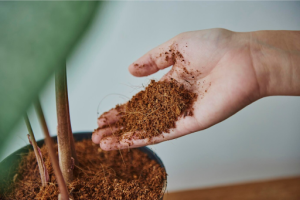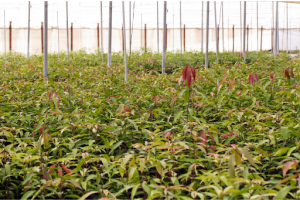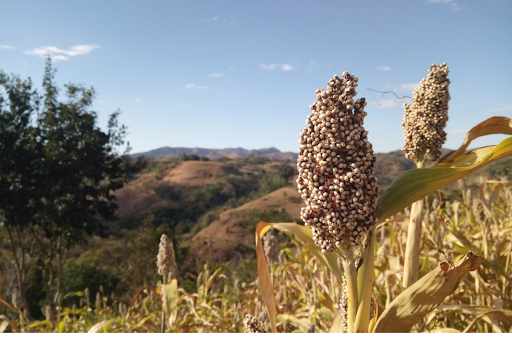Introduction
Sorghum-sudangrass is a powerful tool for farmers looking to improve their soil and feed livestock in a sustainable way. This plant is a hybrid between sorghum and sudangrass, two types of warm-season grasses known for their rapid growth and high nutrient content. Farmers use sorghum-sudangrass as a “cover crop”. Cover crops like this one can reduce soil erosion, keep weeds down, and add important nutrients back into the ground, making it healthier for future crops. For livestock, sorghum-sudangrass is a valuable source of food.
Its leaves and stems are packed with protein and fiber, essential nutrients for animals like cows and sheep. Additionally, this grass is drought-tolerant, meaning it can grow even with limited water, making it a resilient choice for farmers facing dry seasons. Sorghum-sudangrass is a practical option because it can both feed livestock and support healthy soil, saving time and resources while enhancing farm productivity..
Sorghum-Sudangrass as Rotation Crop
Using sorghum-sudangrass as a rotation crop is a smart choice for farmers aiming to boost soil health while providing quality feed for livestock. As a rotation crop, sorghum-sudangrass helps improve soil by adding organic matter and reducing compaction, which is beneficial for future plantings. Its deep root system breaks up hard soil layers, making it easier for water and nutrients to penetrate.
Additionally, this cover crop naturally suppresses weeds, reducing the need for herbicides. After sorghum-sudangrass is harvested or tilled under, the soil is richer and more ready for other crops to grow well.
For livestock, rotating sorghum-sudangrass in fields offers nutritious forage, as it’s high in protein and fiber essential for healthy animals. This plant’s ability to grow quickly in summer, even with less water, makes it a reliable option in dry seasons. Farmers who add sorghum-sudangrass to their crop rotation can achieve better soil quality, lower weed levels, and a reliable source of livestock feed.
Sorghum-Sudangrass for Soil Health: A Regenerative Solution

Sorghum-sudangrass is a powerful regenerative solution for soil health, making it a top choice for farmers seeking sustainable practices. This hybrid cover crop’s thick, deep roots help break up compacted soil, improving water flow and creating healthier soil structure. When tilled under, sorghum-sudangrass adds valuable organic matter back into the ground, enriching it with nutrients that benefit future crops.
Sorghum-sudangrass also excels as a “nitrogen scavenger.” This means it captures leftover nitrogen from previous crops, storing it in the soil for later use, which supports healthier crop growth in future planting seasons. It’s especially helpful in dry regions, as it thrives with less water and grows rapidly, even in hot weather. With its ability to enhance soil quality naturally, sorghum-sudangrass offers farmers a sustainable, regenerative solution to maintain and improve soil health year-round.
Planting Sorghum-Sudangrass: Best Practices
Planting sorghum-sudangrass properly can help farmers get the best results from this hardy crop. Here are some simple best practices:
Wait for Warm Soil: Sorghum-sudangrass seeds need soil that’s warm, at least 60°F, for good germination. Planting too early in cool soil can slow down growth.
Choose the Right Depth and Spacing: Plant the seeds about 1 inch deep and space them well to allow each plant room to grow. This helps them develop strong roots and prevents crowding.
Pick the Right Time of Year: In most areas, late spring to early summer is ideal, as the weather is warm enough for quick growth.
Watch the Moisture: Sorghum-sudangrass doesn’t need a lot of water, but it does grow best in well-drained soil with occasional rainfall or irrigation.
Manage Nutrients: This plant benefits from a little added nitrogen if the soil is low in it, but too much nitrogen can cause excess growth and reduce quality for feeding animals.
Care and Maintenance: Watering, Fertilization, and Pests
Caring for sorghum-sudangrass includes proper watering, fertilization, and pest control to ensure healthy growth and high-quality forage. This crop is drought-tolerant, which means it doesn’t require frequent watering, but it benefits from steady moisture during its early growth stages.
For fertilization, sorghum-sudangrass needs nitrogen to grow strong and produce nutritious forage. Adding nitrogen in two stages—some at planting and a bit more after the first cut—can support healthy growth. Be careful not to over-fertilize, as too much nitrogen can lead to excessive growth and reduced forage quality.
Pest control is essential, as pests like armyworms and aphids may harm the crop. Regularly inspect plants for signs of pest damage, and treat affected areas early. Fortunately, sorghum-sudangrass is naturally resistant to many pests, making it a manageable crop with proper care.
Comparing Sorghum-Sudangrass to Other Forages and Cover Crops

Sorghum-sudangrass stands out among forage and cover crops due to its versatility and resilience. Unlike water-intensive alfalfa, sorghum-sudangrass is drought-tolerant and can thrive with less water, making it an ideal choice for drier areas. Compared to corn silage, which offers high grain content, sorghum-sudangrass provides similar fiber levels but can be harvested multiple times in a season, maximizing its value as livestock feed.
For soil health, sorghum-sudangrass has a deeper root system than cover crops like rye or clover, helping to break up compacted soil and improve water flow. This crop also acts as “nitrogen scavenger,” capturing leftover nitrogen to reduce the need for added fertilizer
With effective weed suppression abilities, sorghum-sudangrass helps farmers minimize herbicide use, making it a low-maintenance and eco-friendly choice for both forage and soil improvement
Common Challenges and Troubleshooting Tips
Growing sorghum-sudangrass can sometimes come with challenges, but understanding common issues makes it easier to troubleshoot. One problem farmers may face is overwatering, as sorghum-sudangrass thrives with minimal moisture once established. Too much water can lead to weak roots and poor growth. Pests, like armyworms, can also harm the crop. Regularly inspecting plants helps catch pests early, allowing quick treatment to avoid damage.
Nutrient management is another key factor. While sorghum-sudangrass needs nitrogen to grow well, over-fertilizing can cause excessive leaf growth and reduce forage quality. Using balanced.Additionally, some farmers notice uneven growth or weed issues. Planting in well-prepared, weed-free soil and maintaining consistent care can reduce these challenges, leading to healthier plants.
Conclusion
In conclusion, sorghum-sudangrass offers farmers an effective solution for improving soil health and providing nutritious forage for livestock. This resilient crop is especially valuable for those in dry regions, as it requires minimal water and supports sustainable farming by reducing soil erosion and suppressing weeds. By planting sorghum-sudangrass, farmers benefit from improved soil structure, thanks to its deep roots, which break up compacted soil and help water and nutrients reach the surface.
Its ability to capture leftover nitrogen also reduces the need for extra fertilizers, further promoting eco-friendly practices. Whether used as a cover crop, rotational crop, or forage, sorghum-sudangrass is a smart, sustainable choice that supports farm productivity and soil health year-round

